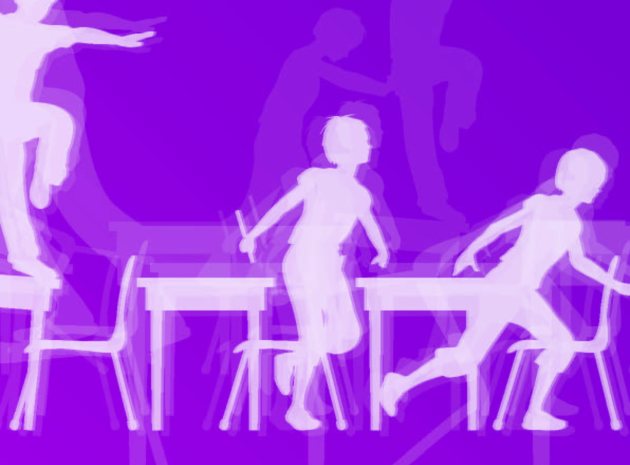Has there ever been a more challenging time to be a teacher? In the current educational climate we are experiencing unparalleled degrees of change, and this is happening at an alarmingly rapid speed. The teaching profession has altered radically over the last decade; indeed, in the most recent years alone we have witnessed a shift in focus during lesson observations from analysing teacher performance to a more specific emphasis on the rate at which students are learning and making progress. What remains constant, however, is the perennial issue of ensuring pupils behave appropriately in the classroom. Many professionals will claim that this is becoming increasingly difficult. Are teachers getting worse? No, of course not. Are young people behaving more badly than before? The media would have us think so, but I disagree. I would argue that society in general is more willing and able to question every aspect of life, and that this is often transmitted into schools and classrooms. It is a hard message to accept, but gone are the days where teachers can expect instant respect and cooperation from students, just because they stand at the front of the room. As educators we must be the biggest advocates for the young people we have the pleasure of working with; and whether we agree with it or not, we need to earn their respect. Respect is something that will come when students see a confident practitioner who is calm, measured, full of praise and positivity, and who most importantly oozes enthusiasm for learning. So how can we achieve this? Here are some suggestions that can assist teachers in creating classrooms that are productive, welcoming and well managed learning environments:
ADJUST THE ATTITUDE
Students need positive reinforcement. Teenagers can be incredibly self-conscious and critical, so teachers need to be positivity personified. Consider carefully the language that you use with the young people in your care. Even if you are being critical of a piece of work or their behaviour, ensure that what you say is phrased in a positive way. Every school has ‘BMWs’ (bitchers, whingers, moaners) or ‘Mood Hoovers’ – the kinds of people who sap the energy out of others with their negativity. Students are incredibly perceptive and will pick up on this extremely quickly. Be sure to surround yourself with staff who are ‘radiators’ instead – they give off heat and warmth through their personalities and positive attitudes. This approach will rub off on your students and create a ‘can do’ atmosphere in your classroom.
MAKE CONNECTIONS
Getting to know your students is one of the most effective ways of acquiring their cooperation and gaining their respect. Developing an insight into their interests and aspirations both in terms of their education and lives outside of school demonstrates to young people that you are interested in them and not just there to pick up your wages at the end of the month. This obviously takes time and effort, and these conversations typically happen when in corridors, during extra-curricular activities and in the playground when you are on duty. It might feel like meaningless chitchat, but a quick exchange about band practice, Minecraft, or Britain’s Got Talent can go a long way to securing the desire response from a student at a later date.
STAY DETACHED
If a student misbehaves in your lesson or is confrontational, do not take it personally. This can lead to a perpetual negative perception of the young person concerned, and could influence your future judgement and manner towards him or her. Similarly, when speaking to your class members, ensure that you separate the behaviour from the person. This is crucial in maintaining positive relationships with students whilst challenging their unacceptable conduct.
CHOOSE YOUR WORDS
Using the wrong phrases with students can result in situations escalating and becoming difficult to manage. It takes significant skill and practice to use language as an effective way to engender the desired response from young people, and we should not underestimate the significant effect the words that educators say have on pupils (I still remember specific things that my teachers said to me, and I’m sure you do too). A few stock expressions can definitely come in handy. For example, describing exactly what students are doing is often more effective than a reactive reprimand. Let’s say a class member is sending a text during a lesson. Barking out, ‘Why is your phone out? Who are you texting? Hand it over!’ is almost certain to provoke a hostile response. A more effective way of dealing with such behaviour would be to use the school rules as an external, overarching set of expectations that the teacher is merely adhering to: ‘I see you have your phone out, now, school rules state that students are not allowed them out in class, so put it in your bag or on my desk, thank you.’ Here the student has been given a positive choice to make, the school rules have been used to produce the desired response (the phone going away), and a conflict has been avoided. Another trick is, when giving instructions, simply to replace ‘please’ with ‘thank you’ at the end of the sentence, thus implying that your instruction is an expectation and not a request. For example, ‘Ben, I would like you to sit in this chair today, thank you,’ is more effective than the polite but rather weak request of ‘Ben, would you sit in this chair please?’
DON’T GET DISTRACTED
This is a hard technique to master. One incident of misbehaviour will often be added to with further challenges – but it is important for the teacher to remain focused on the primary behaviour initially, to elicit the desired response. Tactically ignoring subsequent behaviours ensures that the student does not perceive the teacher to be ‘picking on them for everything’, and it allows the primary incident to be dealt with effectively.
DO IT YOURSELF
The number one complaint from students will often be that something – or someone – is unfair, so ensure that you are as consistent as possible. It’s important, too, that students perceive teachers as the leaders of their classrooms, and this image can be damaged if they become too dependent on heads of department and senior leaders to sort out behavioural issues for them. On occasion it may be necessary, but if it’s a response that’s used too frequently, students will quickly sense a lack of control from their own teacher, and this is likely to lead to increased misbehaviour as they struggle to find boundaries. As much as possible, teachers need to persist with strategies to deal with disruptive students themselves, and seek advice from other members of staff regarding implementing these. Non-judgemental observations and the use of a trusted ‘professional friend’ for constructive feedback can be effective in developing new approaches.
TEACH BETTER
Finally – and rather obviously – there is no better behaviour management technique than engaging your students in a genuinely exciting lesson, where they are so immersed in learning that they do not even think about misbehaving. Taking a proactive approach, rather than a reactive one, will always be advantageous for the class teacher and
ultimately lead to learning and progress. Take time to prepare carefully and remember that although Ofsted might not always want to see a lesson plan, they do want to see evidence of a well planned lesson!










